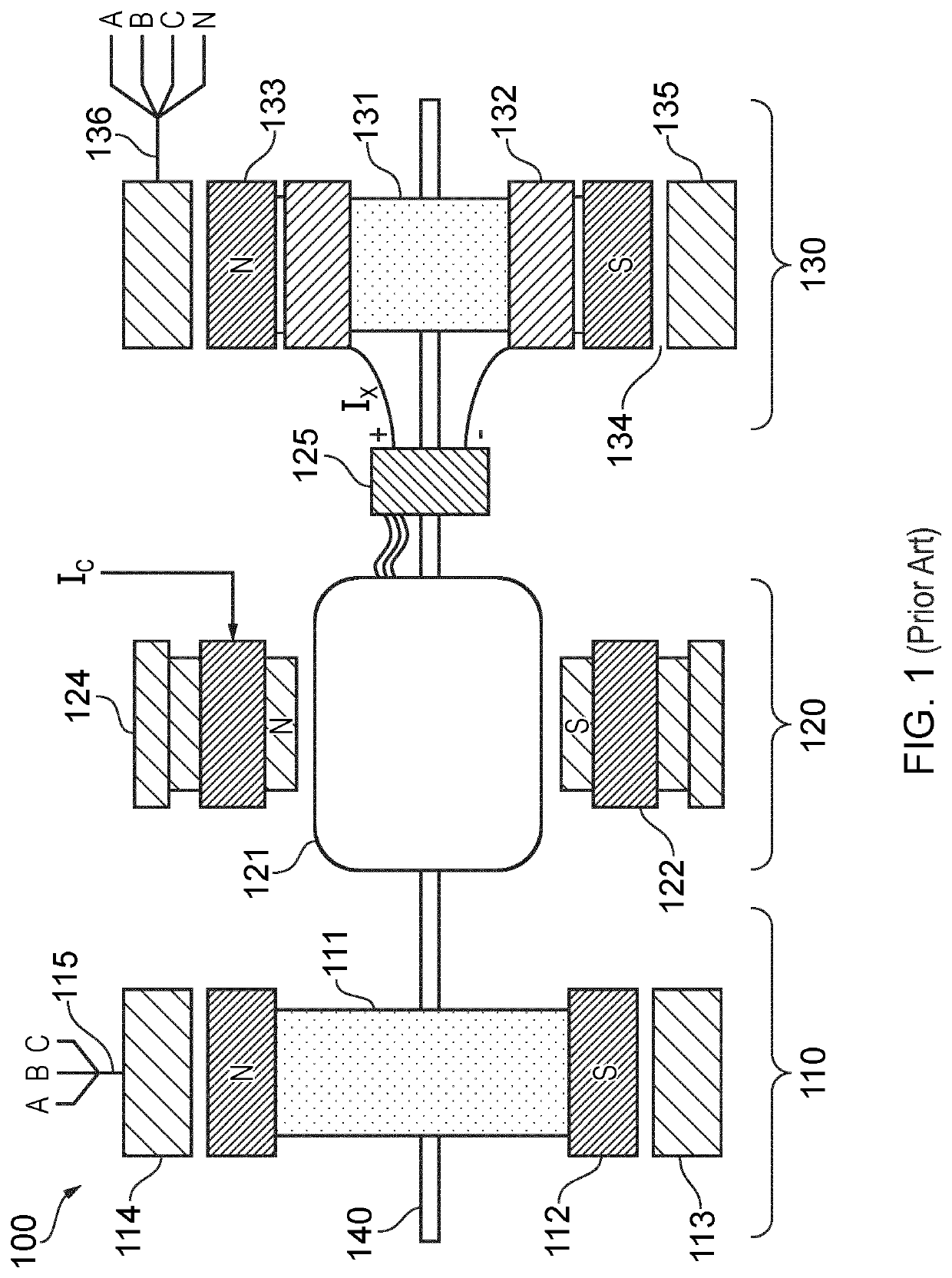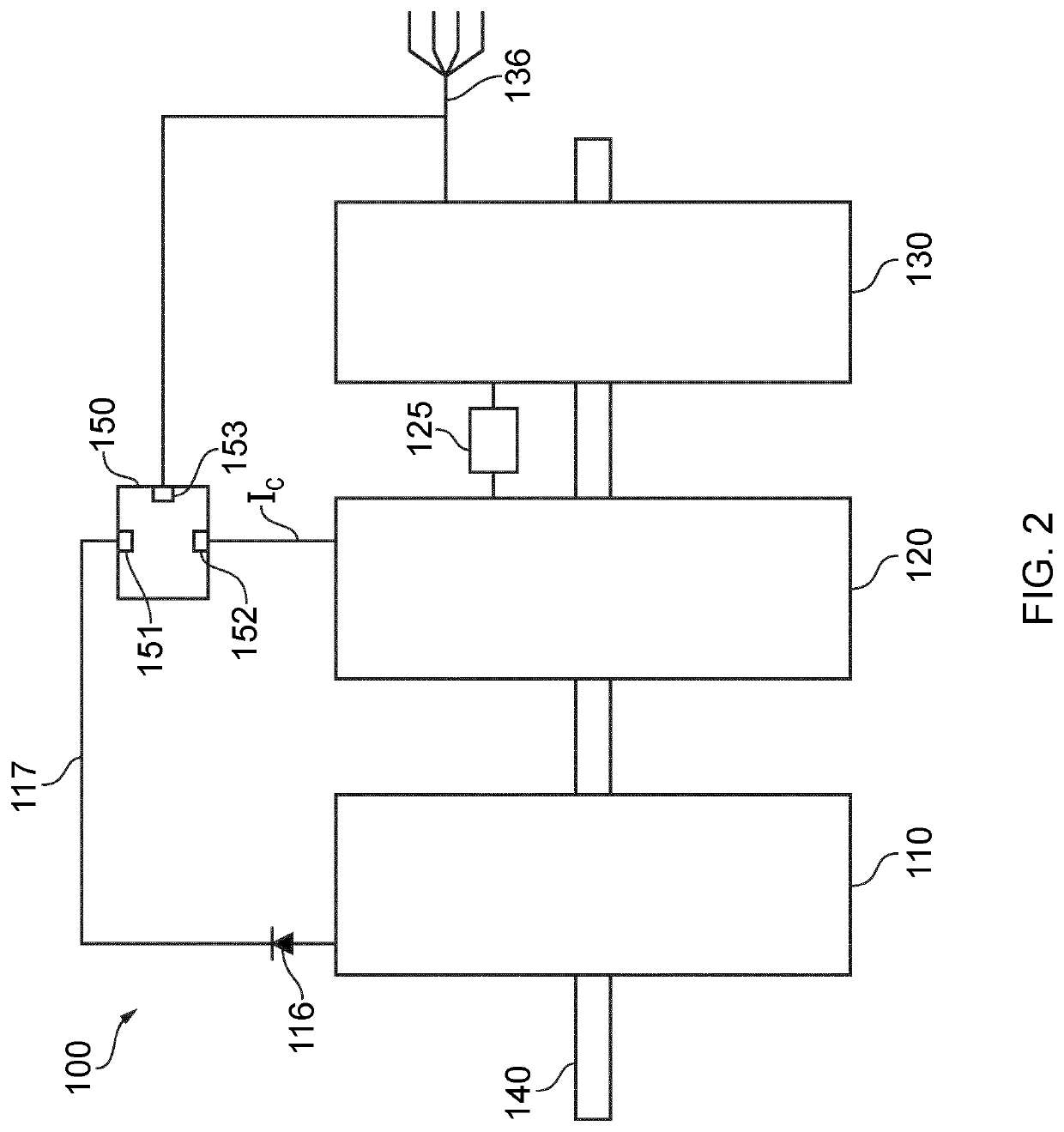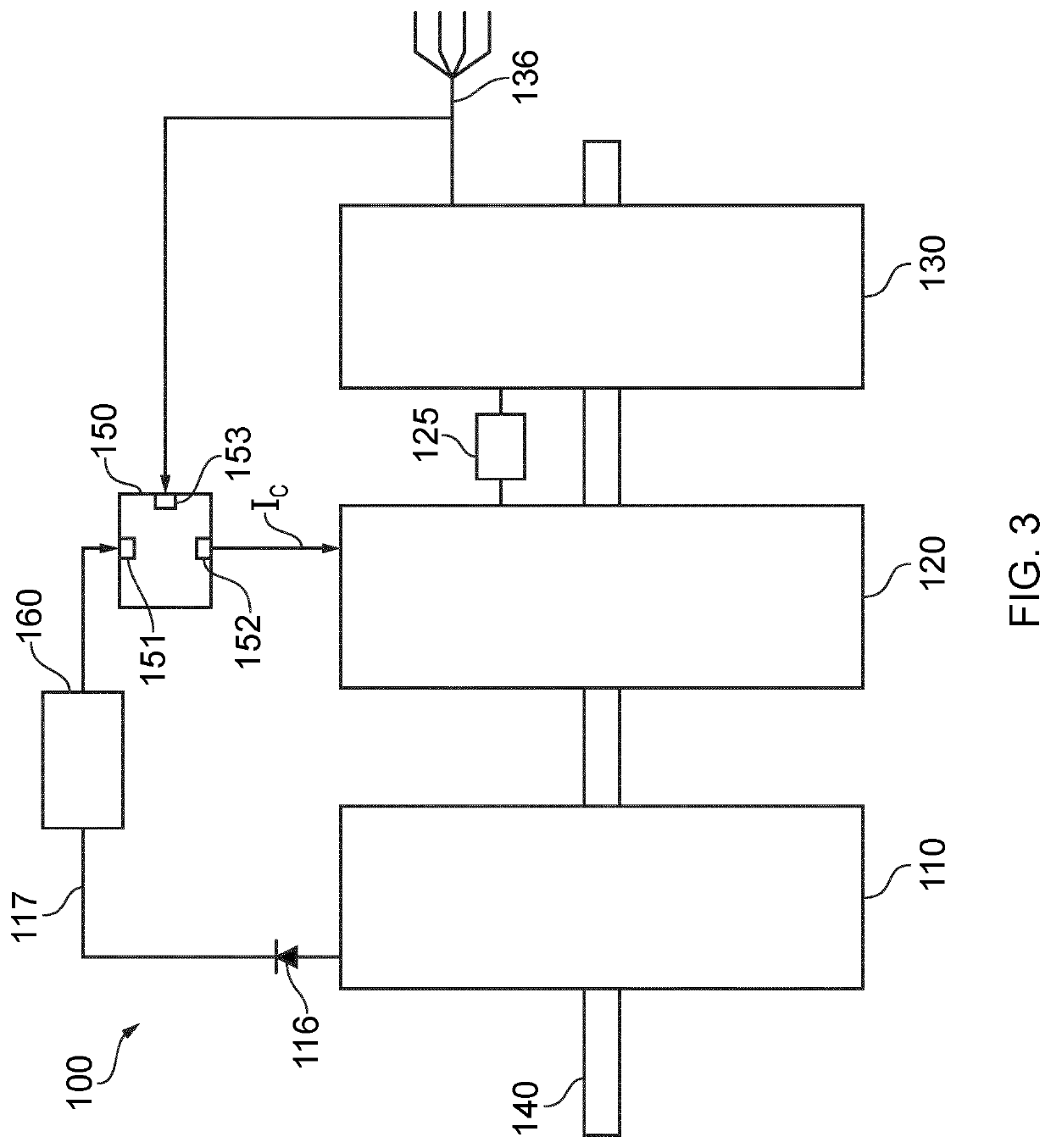Multi-stage synchronous generator
a generator and multi-stage technology, applied in the direction of control systems, electric devices, generation protection through control, etc., can solve the problems of electrical components in the system making up the load, failures, and variations in the output voltage of the generator, so as to reduce the overall weight of the system and mitigate the consequences of a failure of the gcu elemen
- Summary
- Abstract
- Description
- Claims
- Application Information
AI Technical Summary
Benefits of technology
Problems solved by technology
Method used
Image
Examples
Embodiment Construction
[0046]FIG. 3 shows an example of a multistage synchronous generator according to the present invention. It comprises a first stage 110, a second stage 120 and a third stage 130. In the embodiment shown in FIG. 3 the first stage 110, second stage 120 and third stage 130 are all mounted on input shaft 140, although examples of the invention can be implemented using any plurality of stages comprising a first stage, for providing an exciter current to a second stage of the plurality. A field current supply line 117 links an output of first stage 110 and the second stage 120. A rectifier 116 is preferably present in the field current supply line at the output of the first stage 110. Rectifier 116 is preferably a diode rectifier but can take the form of any component or system suitable for rectifying an alternating output of the first stage 110. If, for example, the first stage provides a direct current, then rectifier 116 may not be necessary. The field supply line also comprises a regul...
PUM
 Login to View More
Login to View More Abstract
Description
Claims
Application Information
 Login to View More
Login to View More - R&D
- Intellectual Property
- Life Sciences
- Materials
- Tech Scout
- Unparalleled Data Quality
- Higher Quality Content
- 60% Fewer Hallucinations
Browse by: Latest US Patents, China's latest patents, Technical Efficacy Thesaurus, Application Domain, Technology Topic, Popular Technical Reports.
© 2025 PatSnap. All rights reserved.Legal|Privacy policy|Modern Slavery Act Transparency Statement|Sitemap|About US| Contact US: help@patsnap.com



